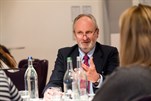
I was taught that history and examination was the foundation of ninety-five percent of clinical diagnosis. Indeed, all the syndromes cited at the back of the Oxford Handbook of Medicine are descriptions of astute clinical acumen. The character of Sherlock Holmes was based on observations of Professor Joseph Bell – he had a holistic approach to surgery and emphasised that fact that surgeons were physicians first. According to Arthur Conan Doyle, Bell’s strong point was not only his diagnostic skills but also his ability to deduce the occupation, home, and work of the patient. There is a picture attesting to his skills as a clinician in the Conan Doyle room in the RCSEd. This story was reiterated in a powerful TED talk by Dr Abraham Verghese six years ago -A doctor’s touch. He tells of a story of a lady presenting widespread breast metastases despite visiting a doctor on multiple occasions. He believes that when we bypass a good history and examination, ‘we lose a ritual that is both transformative and transcendent’. I recommend this TED talk to all students and trainees because I believe this sits at the heart of what we do as physicians.
The outpatient clinic is an ideal setting for one to one teaching – it is the perfect setting for dialogue with the patient and the trainee remembering that communications is 7% what we say, 35% how we say it and the rest communicated through body language. I do wonder if we are going to miss out on much of the patient story if consultations are now remote. On the other hand, a video link may of course give an insight into the persons home and further Bells holistic and deductive reasoning.
The outpatient clinic affords an opportunity to refine examination skills. The patient must be comfortable and appropriately exposed. The couch must be at a comfortable height for the clinician. I recall the old-fashioned beds offered a subtle diagnostic tool for the diagnosis of peritonism – the pumping action, unlike smooth elevation by electric motors, bounced the bed. The hand needs to be washed and warm. The examination is conducted looking at the patients face, as their fascial expression will leak any hint of discomfort or displeasure.
Examination is a ritual of inspection, palpation, percussion, and auscultation in that order. All this requires knowledge of surface anatomy. We conducted a recent study that evidenced percussion and tactical vocal fremitus were seldom used and poorly executed. The aforementioned techniques are in essence the basis clinical ultrasound. There is widespread ignorance of the surface anatomy of the lung and pleura. Furthermore, a two-year audit demonstrated that ‘routine-follow-up’ chest X-rays were obviated with a proper clinical examination saving over £26 000.00 a year. The flow through the clinic improved – the waiting times fell, and clinics finished on time. The registrar who conducted the study and is now a successful consultant radiologist won the gold medal for this presentation at a radiology conference.
But there is much more to examination as described by Doctor Verghese. The laying-on-of-hands has been a symbol of healing for thousands of years. In Greek mythology, Asclepius, was taught hands on healing by the wise centaur Chiron, and his statues were adorned with ’golden-gifted’ hands. This continued throughout Christianity with the ‘laying-on hands’ and the numerous stories of healing. Today this practice is often reflected in complimentary health care. There is something powerful and comforting in touch – this forms the essence of maternal bonding and conveys more than a thousand words. Touching says, I am here for you and I am present. I do not like it when trainees put on gloves to examine patients (body fluids excepted) – I believe this act is insulating and potentially insulting as it distances the physician from the patient.
COVID-19 has distanced the physician and the patient for good reason, but I sincerely hope that the surgeon continues to practice holistic medicine – a surgeon is a physician first. Full history and proper examination predicates surgery. We cannot allow a telephone or telemedicine conversation to be a prelude to a ‘Dr-House-investigation-exclusion-battery-of-tests-scenario’. This will increase anxiety, delay diagnosis, cost money and potentially lead down rabbit holes. As Dr Verghese says in his TED talk – the hand and touch are the best investigative tools we have at our disposal. The physicians’ hand has always been and always will be the most significant of clinical tools.
About the author:
 David O'Regan is the Director of the Faculty of Surgical Trainers. He has been a Consultant adult Cardiac Surgeon in Leeds since 2001.
David O'Regan is the Director of the Faculty of Surgical Trainers. He has been a Consultant adult Cardiac Surgeon in Leeds since 2001.
Select a year and month from the headings below to view blog posts from that month.
Due to essential systems maintenance and upgrades there will be interruptions to some on-line services on Saturday 19th of August.
We apologise for any inconvenience caused.
×